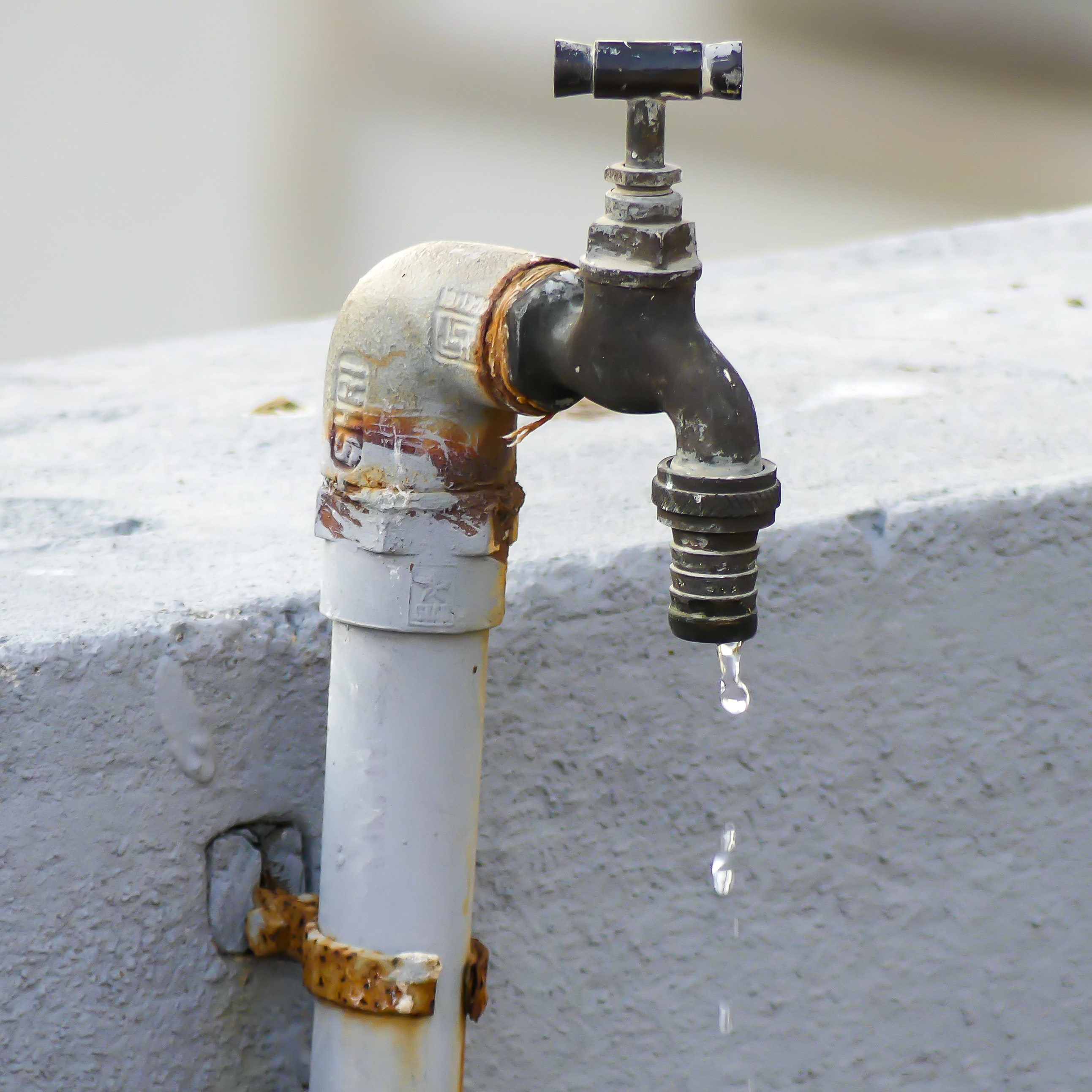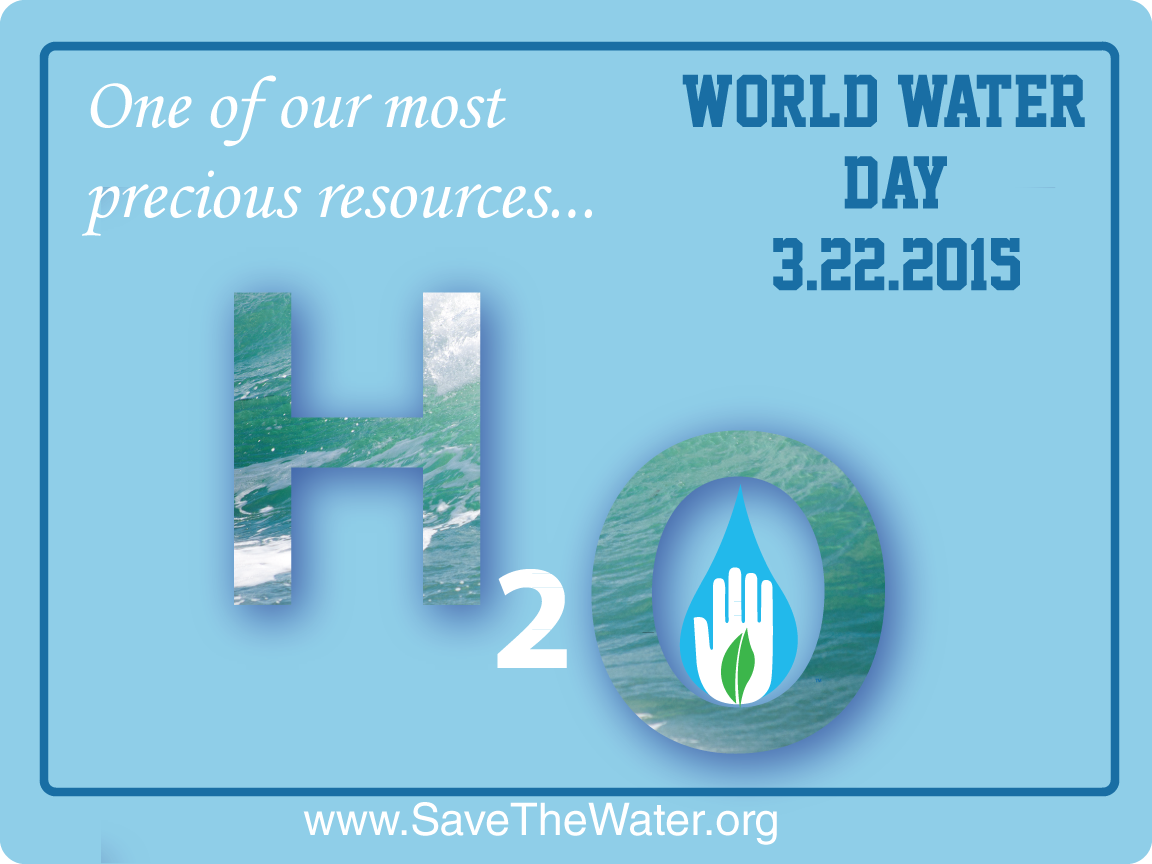
By Olivia Philips, Staff Writer for Save The Water™ | March 5, 2015
It takes approximately 33 ounces of water to create a single sheet of paper; it takes about the same amount of water to irrigate one calorie worth of food. While 70% of our earth is blanketed with water, only about 3% is fresh water, and of that fresh water, only about 25% is accessible — if you’re still following, that means only 0.75% of the world’s water is fresh and accessible for use. Additionally, even in places where water may not be physically scarce by nature, scarcity is becoming a threat as a result of overuse or mismanagement. It is estimated that by 2025, 67% of the world’s population may face water shortages (WWF). In graphic terms, that means the equivalent of nearly 15 United States populations may face water shortages.
World Water Day was launched in 1993 by the United Nations General Assembly as a day to celebrate water and shine a light on its importance in our world. Since the launch, every March 22 has marked and brought awareness around the world to a different water-related theme; this year, the theme is “Water and Sustainable Development” (UN-Water), highlighting the issue of water scarcity.
Water scarcity is an issue for a number of reasons—some of which are more obvious than others. First and foremost, water is essential to bodily health. Lack of access to clean, fresh water is a daily struggle for many throughout the world. Facing death by dehydration, many are forced to drink from unclean sources, where pathogens and bacteria thrive, increasing the likelihood of diseases such as dysentery and cholera (The Water Project). For some, storing water within the home seems like a practical option, but stagnant water creates environments where mosquitos carrying malaria or other diseases can breed (UN-Water).
Even for those in communities where access to clean drinking water is not an issue, effective water management is relevant. Every processed item demands water for the manufacturing cycle, from ground beef to the plastic it’s packaged in, and demand for water will only increase as the global population rises (Growing Blue). Water shortages could lead to higher prices or even eliminate some products altogether. Industrial water output often merges dirty wastewater with clean water sources, causing contamination (WWF).
Water scarcity also creates political issues. By 2050, the global population is estimated to rise to 8–9 billion (Growing Blue). In areas that lack major access to natural bodies of fresh water, effective management will continue to be critical. Many communities share water with neighbors, and the struggle over access can deepen cultural strife, such as in sub-Saharan Africa (The Water Project). Even in regions with abundant sources, such as along the Colorado River, policies that ignore responsible management are leading to costly overuse (UN-Water).
These problems compound: when governments mismanage water distribution, women and children often resort to traveling long distances for water, creating difficulties in holding jobs or attending school (WWF). Without education or income, many cannot afford the rising costs of goods produced with scarce water, feeding the cycle of poverty.

This year’s World Water Day is especially important to be aware of, because the efficacy of water management in our homes, workplaces, and industries will affect our world for decades to come. Many have already taken small steps—turning off the faucet while brushing teeth, taking quicker showers, reusing water for plants. Others are taking larger steps, such as Bangladesh’s Water PaCT, which ensures water leaving textile mills is cleaner than when it entered. The British retailer Tesco, Swedish clothing company H&M, and the Kingdom of the Netherlands are among its supporters, showing that water responsibility is a multinational issue.
Events are taking place across the globe to raise awareness: in the U.S., there will be a screening of Cowspiracy in Chicago, and in Miami, university students will pledge to “Take Back the Tap.” In Africa, Swaziland will host a conservation symposium, and Ghana will open solar-powered water pump sites to serve villages. In the UK, fundraisers will target water sustainability, and in Germany, the Global Nature Fund will name the “Living Lake of the Year.” (World Water Day Events)
This is just a small sampling of the hundreds of events happening worldwide. Water scarcity can only be solved by working together. Check events near you at the World Water Day website, learn how your community is affected, and get involved this March 22.